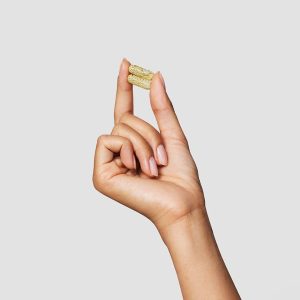
Hairspray is a common styling product. Many adults use it regularly. But is it safe and appropriate for kids? This is a question many parents ponder. Let’s explore the potential concerns and considerations surrounding hairspray use for children. Is hairspray appropriate for kids?
Understanding Hairspray Ingredients
Is hairspray appropriate for kids? First, it’s important to understand what hairspray contains. Common ingredients include:
- Polymers: These create the hold that keeps hair in place.
- Alcohol: This helps the hairspray dry quickly.
- Plasticizers: These make the hairspray flexible and prevent it from feeling stiff.
- Fragrances: These add a pleasant scent.
- Propellants: These are used in aerosol sprays to push the product out of the can.
Some hairsprays also contain additional ingredients like:
- Silicones: These add shine and smoothness.
- Sunscreens: These protect hair from sun damage.
- Conditioning agents: These help to moisturize hair.
Potential Concerns with Hairspray
While hairspray is generally considered safe for adults, there are some potential concerns for children.
- Inhalation: Inhaling hairspray can irritate the lungs and airways. This is especially concerning for young children with developing respiratory systems.
- Eye Irritation: Getting hairspray in the eyes can cause stinging and irritation.
- Skin Contact: Some children may experience skin irritation or allergic reactions to certain ingredients in hairspray.
- Flammability: Aerosol hairsprays are flammable. It’s important to keep them away from heat sources and open flames.
- Ingestion: Young children may accidentally ingest hairspray if they put their hands in their mouths after touching the product.
Age Recommendations
There are no official age recommendations for hairspray use. However, many experts suggest avoiding hairspray on young children.
- Infants and Toddlers: Hairspray is generally not recommended for infants and toddlers. Their respiratory systems are still developing, and they are more likely to put their hands in their mouths.
- Older Children: For older children, hairspray use may be considered in moderation, with careful supervision and attention to safety precautions.

Safety Precautions
If you do choose to use hairspray on your child’s hair, follow these safety precautions:
- Well-Ventilated Area: Use hairspray in a well-ventilated area to minimize inhalation.
- Avoid Face: Spray the hairspray away from the face to prevent eye contact and inhalation.
- Short Bursts: Use short bursts of spray instead of continuous spraying.
- Supervise: Always supervise children when they are around hairspray.
- Handwashing: Encourage children to wash their hands after touching hairspray.
- Storage: Store hairspray out of reach of children.
Alternatives to Hairspray
There are many alternatives to hairspray that may be more suitable for children.
- Hair Gel: Hair gel provides a lighter hold and is less likely to irritate the lungs.
- Hair Mousse: Hair mousse adds volume and texture without the stiffness of hairspray.
- Hair Wax: Hair wax is good for creating specific styles and taming flyaways.
- Natural Styling Products: Look for natural styling products with fewer chemicals and potential irritants.
- Braids and Updos: Try hairstyles that don’t require any styling products at all.
Special Considerations
- Asthma or Allergies: If your child has asthma or allergies, consult with their doctor before using hairspray.
- Sensitive Skin: If your child has sensitive skin, choose hairsprays formulated for sensitive skin or opt for natural alternatives.
- Frequency of Use: Limit hairspray use to special occasions rather than everyday use.
Open Communication
Talk to your child about hairspray and its potential effects.
Explain the Risks
Explain the potential risks of inhaling hairspray or getting it in their eyes.
Set Boundaries
Set clear boundaries about when and how hairspray can be used.
Encourage Responsibility
Encourage your child to take responsibility for their own hair care and styling choices.
By taking a cautious approach and prioritizing your child’s health and safety, you can make informed decisions about hairspray use.

Hairspray and Special Occasions
While everyday hairspray use might not be ideal for kids, there are certain occasions where its use might be considered.
- Dance Recitals and Performances: For special events like dance recitals or theatrical performances, a bit of hairspray can help keep elaborate hairstyles in place.
- Costume Parties: If your child is dressing up for a costume party, a small amount of hairspray can help achieve a specific look.
- Picture Day: For picture day at school, a light mist of hairspray can help tame flyaways and keep hair looking neat.
However, even on these occasions, moderation and safety precautions are crucial.
Hairspray and Self-Esteem
It’s important to consider the impact of hairspray on a child’s self-esteem.
- Positive Reinforcement: If your child wants to use hairspray, focus on positive reinforcement and encourage them to embrace their natural beauty.
- Avoid Pressure: Don’t pressure your child to use hairspray or conform to specific beauty standards.
- Healthy Habits: Promote healthy hair care habits, like regular washing and conditioning, to boost their confidence.
Hairspray and Environmental Impact
Consider the environmental impact of hairspray.
- Aerosol Cans: Aerosol hairspray cans contribute to air pollution. Look for pump sprays or non-aerosol alternatives.
- Harmful Chemicals: Some hairsprays contain chemicals that can harm the environment. Choose eco-friendly options with natural ingredients.
Teaching Kids About Hairspray
Use hairspray as an opportunity to teach your child about responsible product use.
- Read Labels: Teach your child how to read product labels and understand the ingredients.
- Safety First: Emphasize the importance of safety precautions when using hairspray.
- Decision-Making: Help your child develop critical thinking skills and make informed decisions about their hair care choices.
Hairspray and Role Modeling
As a parent, you are a role model for your child. Is hairspray appropriate for kids?
- Your Habits: Your own hairspray habits can influence your child’s perception of the product.
- Moderation: Practice moderation in your own hairspray use.
- Healthy Alternatives: Explore and demonstrate the use of healthy alternatives to hairspray.
A Balanced Approach
The key to navigating hairspray use for kids is a balanced approach.
- Prioritize Health: Prioritize your child’s health and safety above all else.
- Open Communication: Maintain open communication with your child about hairspray and its potential effects.
- Respect Individuality: Respect your child’s individuality and their hair care choices.
- Informed Decisions: Empower your child to make informed decisions about their hair as they grow older.
By following these guidelines, you can help your child develop a healthy relationship with hair care and make responsible choices about hairspray use.

Hairspray and Cultural Practices
In some cultures, hairspray or other hair styling products may be used as part of traditional practices or celebrations.
- Cultural Sensitivity: It’s important to be sensitive to cultural practices and traditions.
- Respectful Dialogue: Engage in respectful dialogue with your child about cultural practices and their significance.
- Finding Balance: Help your child find a balance between honoring cultural traditions and prioritizing their health and well-being.
Hairspray and the Future
As with many things, trends and attitudes towards hairspray may change over time.
- Evolving Products: Hairspray formulations may evolve to become more child-friendly and environmentally sustainable.
- Changing Perceptions: Social perceptions of beauty and hair care may shift, leading to different attitudes towards hairspray use.
- Informed Choices: Stay informed about new developments and empower your child to make informed choices about their hair care.
Conclusion: A Matter of Choice
Is hairspray appropriate for kids? Ultimately, the decision of whether or not to allow your child to use hairspray is a personal one. By weighing the potential risks and benefits, and by taking necessary precautions, you can make informed choices that prioritize your child’s health, well-being, and individual expression. Open communication, education, and a balanced approach are key to navigating this aspect of your child’s personal care.





